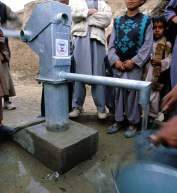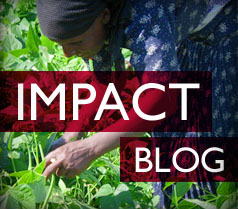- Agriculture and Food Security
- Democracy, Human Rights and Governance
- Economic Growth and Trade
- Education
- Environment and Global Climate Change
- Frontiers in Development
- Gender Equality and Women's Empowerment
- Global Health
- Science, Technology and Innovation
- Water and Sanitation
- Working in Crises and Conflict
Supporting Private Enterprise
A vendor sells vegetables and other food items at her shop in Jakarta, Indonesia.
Arif Ariadi/AFP
A vibrant private sector is essential to economic growth, poverty reduction, and the achievement of other development goals. Private enterprises drive innovation and improve economic productivity—creating the jobs that lift people out of poverty. They produce the goods and services that improve living conditions. And they generate the tax revenues which fund critical social services such as education and healthcare for the poor.
USAID develops private enterprise in four key areas:
- Skills and Capacity Building: Under President Obama’s Global Engagement Initiative, USAID identifies promising entrepreneurs and rapidly growing enterprises and helps them improve their operations through training, business networks, financing through private enterprise funds and credit guarantees, and other support. This includes building financial literacy and business acumen, as well as facilitating access to markets, information, and networks.
- Access to Finance: USAID implements innovative solutions to enable entrepreneurs to access the finance they need to start and grow businesses. This includes building the strong regulatory and supervisory frameworks which encourage sound lending and fostering the growth of strong credit bureaus and collateral registries to reduce risk. USAID also encourages the adoption of financial instruments and strengthens capacity within financial intermediaries to meet the credit needs of small and medium enterprises. One of USAID’s innovative approaches to increase the flow of capital in developing countries is the Development Credit Authority, which helps unlock financing for farmers, entrepreneurs, and small and medium enterprises in underserved countries.
- Enabling Environment: Businesses need a favorable legal and regulatory climate to thrive and grow. USAID supports policies and regulations that foster private sector engagement by partner governments, and leads global and regional initiatives promoting private sector engagement.
- Linkages and Private Sector Engagement: USAID uses an array of resources, including enterprise funds and challenge grants, to encourage market linkages, for-profit investment, and private sector engagement in critical areas such as health, stabilization, and food security.
Examples of Results:
- USAID assistance has resulted in tremendous growth in credit to the private sector worldwide, as well as increased access to credit by hundreds of thousands of small and medium enterprises that would not otherwise have been able to obtain financing for investment. Support for capacity development and financial sector institutions has significantly reduced the risk in lending, making borrowing more available and affordable for businesses.
- Under the Entrepreneurship Initiative and in partnership with the Department of State, USAID has supported skills and capacity building programs that have enabled tens of thousands of entrepreneurs around the world to start and grow enterprises. And it has enabled hundreds of thousands of small family-owned enterprises to expand their businesses and increase profits.
- USAID’s Private Enterprise Promotion activities identify and support investment and trade opportunities for U.S. businesses within our presence countries. Economic growth and poverty reduction in USAID countries leads to growing demand for U.S. goods and services.
- After the collapse of the Berlin Wall, USAID established 10 enterprise funds in Eastern Europe and the Former Soviet Union. Congress authorized nearly $1.2 billion for these funds, which leveraged an additional $5 billion in private investment capital, created or sustained more than 260,000 jobs through investment and development activities, and is expected to recoup at least 137 percent of the original funding.
- One example of USAID’s work to support underserved segments of the population is in Pakistan, where a USAID project is helping 75,000 micro-entrepreneurs become more competitive. So far, more than 70,000 women micro-entrepreneurs have been trained in basic financial literacy; 10,000 medicinal and aromatic plant collectors received toolkit kits and trainings for collecting and transporting plants; 6,000 women artisans were provided with sewing and embroidery kits; and 22,579 dairy farmers received livestock vaccines, fertilizer, and seed—leading to a 42 percent increase in milk production.
Related Sectors of Work








Comment
Make a general inquiry or suggest an improvement.